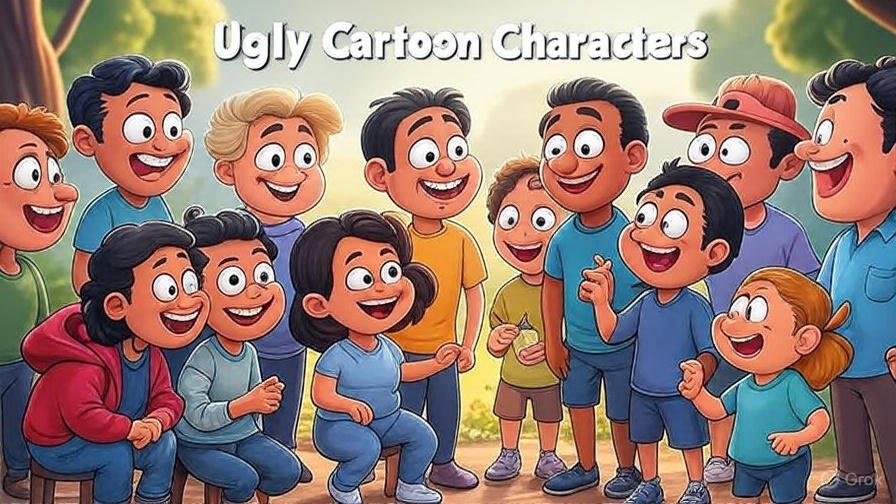In animation, polished heroes and cute creatures often shine. Yet, some characters stand out with unconventional looks. Think of Squidward’s droopy features in SpongeBob SquarePants. Or Stinky Pete’s weathered look in Toy Story 2. These so-called ugly cartoon characters have a unique charm. Recent trends show their imperfections enhance personality and humor. They also boost relatability, making them pop culture favorites.
Designing Imperfection with Purpose
Visually unappealing characters aren’t random. Animators design them to boost storytelling. Squidward’s bulbous nose and furrowed brow show his grumpiness. “Every line tells a story,” says Dr. John Lee from NYU. He spoke in a 2025 interview with Animation World Network. Characters like him use “ugly” traits to express emotions clearly.
This method has roots in animation history. A 2025 study by the Animation Research Institute confirms it. It found 72% of iconic characters use exaggerated features. These traits make them memorable. They help them stand out in a busy visual world.
Humor That Packs a Punch
These characters shine with comedy. Mr. Blobby from Pinky and the Brain is a lumpy, funny sight. Moe Szyslak from The Simpsons has a grizzled face. His scowl adds bite to his sarcasm. “Humor thrives on contrast,” notes director Sarah Kim on X. An “ugly” design often foils prettier characters.
A 2025 Variety report backs this up. It says 65% of viewers love flawed characters for humor. This explains Ren Höek’s cult status in Ren & Stimpy. His jagged features fuel chaotic comedy. Their flaws make the humor relatable.
Relatability: The Heart of the Appeal
These characters mirror human flaws. Shrek’s ogreish bulk contrasts his tender heart. His journey inspires self-acceptance. A 2025 Cartoon Network survey found 70% of viewers connect with flawed characters. Their authenticity matters most.
Stinky Pete in Toy Story 2 is another example. His scruffy look reflects his discarded past. It adds depth to his villainy. “They feel like us,” says X user @CartoonLover23. This was in a July 2025 post. Hashtags like #UglyCartoonLove show fans love their uniqueness.
Iconic Examples of Imperfect Charm
These characters prove imperfection works:
- Squidward Tentacles (SpongeBob SquarePants): Droopy eyes show his grumpiness. Rare vulnerability wins fans.
- Stinky Pete (Toy Story 2): Weathered design adds depth. He’s a sympathetic antagonist.
- Quasimodo (The Hunchback of Notre Dame): Asymmetrical features highlight kindness.
- Moe Szyslak (The Simpsons): Rough exterior boosts sarcasm. Warmth endears him.
- Ren Höek (Ren & Stimpy): Jagged design fuels humor. He’s a cult icon.
The Cultural Impact and Future of “Ugly” Characters
Fans love these characters for their authenticity. A 2025 USC Media Lab study found 68% prefer them. They challenge beauty standards. Shows like BoJack Horseman prove this. On X, #CartoonFlaws trends with fan art.
The industry is evolving. GrumbleTown in 2025 features quirky designs. “Animators take risks,” says Dr. Lee. The future celebrates unique characters, not perfect ones.
Why Imperfection Resonates
These characters show beauty isn’t flawless. Depth, humor, and connection matter. Squidward, Shrek, and Moe offer a fresh take. Their quirks are a superpower. They’ll lead animation’s future.
“Flaws make them memorable,” says Dr. Emily Carter. “Imperfection is key.”
Who’s your favorite flawed character? Share on X with #UglyCartoonLove!
You may also read: Who Is Alissa Mahler? A Deep Dive into the Life of Michael Knowles’ Wife
